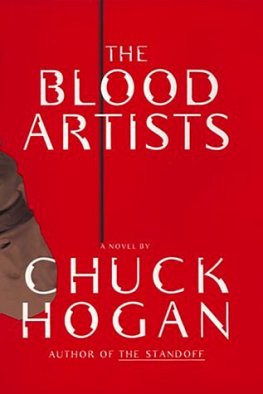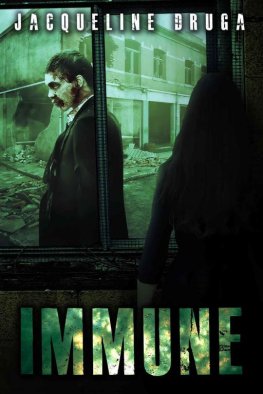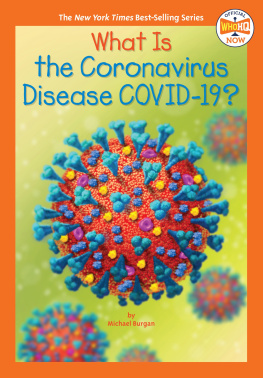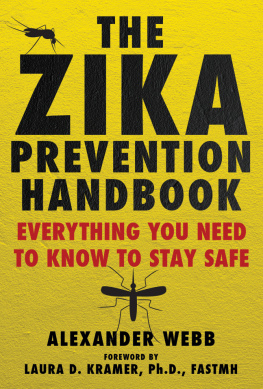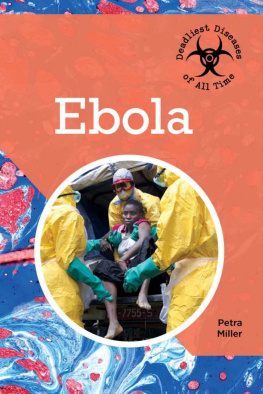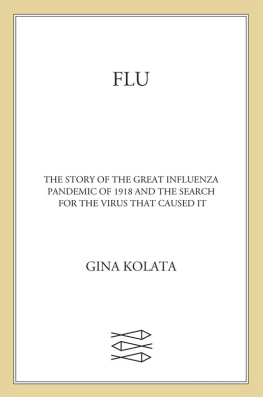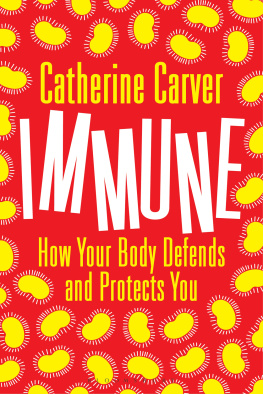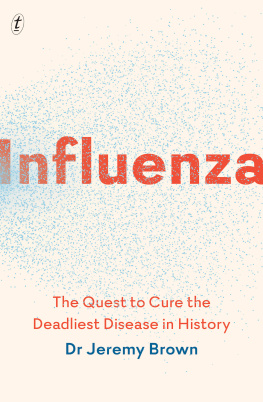Chuck Hogan
The Blood Artists
We would like to go into the true reasons that brought you here he began, but she interrupted.
I am here as a symbol of something. I thought perhaps you would know what it was.
You are sick, he said mechanically.
Then what was it I had almost found?
A greater sickness.
F. SCOTT FITZGERALD,
Tender Is the NightThe desire for possession is insatiable, to such a point that it can survive even love itself. To love, therefore, is to sterilize the person one loves.
ALBERT CAMUS,
The RebelA virus is a bit of genetic
acid wrapped in protein.
It is neither alive nor dead.
It is small, smaller than bacteria,
many times smaller than any animal cell.
A virus has no energy of its own.
It cannot reproduce.
A virus without a living cell to plunder is helpless and inert.
It must steal life by slipping into a congenial cell
and tricking it into replicating viruses.
This is the act of infection.
A virus does not want to kill.
It does not even want to harm.
It wants to change.
It wants that part of it that is missing.
It wants to become.
Eclipse
(the barren early period of infection)
The Strange Case of Dr. Peter Maryk
Everything that begins, begins with blood.
We were at work in a B1 blood laboratory on the third floor of the seventh building of the Centers for Disease Control and Prevention, a network of industrial-looking brick-and-mortar structures located just outside the city limits of Atlanta, Georgia. We were both junior virologists on staff at the CDC, myself and Peter Maryk, and both thirty-one years of age. This was the final week of December 2010.
Peter worked across the lab table from me, standing over a whir-ring centrifuge, spinning down blood serum. His hair was pearl-white and had been since college, and he kept it short and straight, his angular face and slate gray eyes set in a mask of severity. He switched off the centrifuge and like a roulette wheel it slowed, ticking to a stop, silence returning to the lab. He crooked his head at a tinny scratching behind him.
Thirty-sevens going down, he said.
I looked across at the wire cages. Thirty-seven, a large, white, pink-eyed rat, was digging repetitively at the metal floor and shifting back and forth. His hind legs buckled beneath him, and at once he slumped over onto his side.
I crossed to the cage. Thirty-seven kicked sideways at the air, his small-toothed mouth opening and closing. Blood dappled his sugar-white chin. His pink eyes fixed on my face as his body twitched, his tail lashing at the cage floor, pang, pang. The jerking became less and less frequent, and Thirty-seven expired staring at me.
There was still a chill. Death made failure real, something I wished not to repeat.
Peter appeared at my side. He opened the top door of the cage with a gloved hand and lifted Thirty-seven out by the tail, sealing him inside a numbered plastic bag.
It should work, I said. Weve watched it under slides. We know it works. Its just too potent for rats.
Peter said nothing. He returned to his station and set the bag down on the table with a light,thump.
We cant go to primates, I continued. If we go to chimps well have to declare our research, and Im not ready for that.
Peter and I distinguished each other in our fields of specialization, mine being straight laboratory science, Peters being field pathology and investigation. I was most at home in a laboratory setting, but Peter was growing restless, and beginning to show his disdain for the project.
Clean human blood was a precious commodity as the first decade of the twenty-first century drew to a close. An onslaught of viral and bacterial disease had depleted the reliable source pool, and patients around the world were dying, stuck on long lists waiting for transfusions of untainted blood. Lucrative black markets had sprung up in every major population center, from New York to Beijing to Cairo, where illicit blood traded at fifteen to twenty times its weight in gold.
Like many medical scientists of the day, Peter and I had dedicated ourselves to the great challenge of developing a safe, synthetic human blood substitute. Yet that achievement alone would not have satisfied me. I was seeking to improve on organic human blood by deriving not merely a perfect substitute, but one infused with enhanced virus- and cancer-fighting properties. Peter was questioning the propriety of our work, and fully half my time now was spent appeasing him. His participation in the project was essential. Peter Maryks immune system was infallible. He possessed innate immunological qualities beyond the natural ability of any human being known to medical science. When Peter Maryk claimed never to have been sick a day in his life, he meant it as fact. His gifted blood provided the essence of our project. At that time, my goal of conferring some degree of Peters enhanced immune system to the ill seemed in reach. The potential benefit to medical science and worldwide human health would be inestimable.
We returned to our stations on opposite sides of the wide stainless steel table, Peter to his centrifuge and I to my binocular microscope. I bent over it and looked down upon a small, bustling, crystalline city.
There was a thick popping splash, and I shot back reflexively. Peter was rising from the table, arms out at his sides, blood splattered over his fleshy latex gloves and paper smock and the small beige refrigerator humming behind him.
Peter glowered at me, and I stood. It was a scare, but fortunately the blood was our own. He picked up the dripping plastic pack labeled MARYK and examined the torn eyelet. The rest of the pocketed units of blood labeled either PEARSE or MARYK hung from a steel rack over the table. My blood was the projects control. Four small vials labeled PEAMAR4 were the product, to date, of the fourth generation of our efforts.
Peters spilled blood was inordinately rich in color, oozing over the steel table top and seeping in dark parabolas down the walls of the sink. He turned on the faucet and ran water over his gloved hands, then wiped down the sink and counter and untied his bloodied smock, stripping off his gloves. He started toward the door with such intensity that I believed he would walk out and keep going, never to return to the lab or the project, but he merely disposed of his soiled gloves in a red biohazard box set into the wall. He was on his way back for a fresh pair when he slowed to read the flip-up screen of his tablet, a portable notebook computer, recharging in a wall socket and therefore wired into the CDcs central net.
Stephen, he said.
Every sentence Peter Maryk spoke, even the most benign of phrases, was infused with urgency. His voice was clear and deep, compelling. I went around the table and joined him, struck by the scent of baby powder coming off his bared hands. Peters hands were never without protective gloves, in or outside the lab. They were pallid and smooth-knuckled, and he held them upturned as though awaiting a towel.
The monitor was flashing an EPI-AID mail message. The epidemic assistance request had been posted over the CDC-maintained LifeLink web from a Dr. Andr Dieudonn Kaunda in the central African Congo for vaccine to treat one unconfirmed case of variola major, or smallpox. I reviewed the symptoms detailed in French beneath the description of the patient, a nine-year-old Congolese girl said to be in the poring stage.
Buboes, Peter translated, fancying the antiquated term.
Cant be.
The symptoms match. But no request for assistance. Or investigation.
Hes just uncertain, I said. As well he should be.

